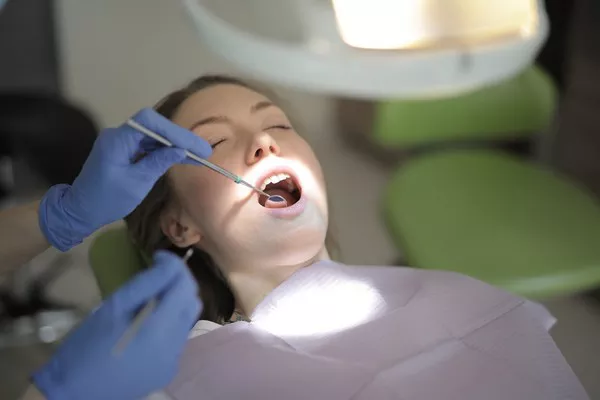Teeth whitening strips have become a popular choice for individuals looking to achieve a brighter smile. However, understanding how often to use whitening strips is essential to ensure both effective results and the overall health of your teeth. In this comprehensive guide, we will explore the frequency of using whitening strips, addressing important considerations and providing recommendations to help you maximize their benefits while minimizing potential risks.
Understanding Whitening Strips
What Are Teeth Whitening Strips?
Teeth whitening strips are thin, flexible strips coated with a bleaching agent, typically hydrogen peroxide or carbamide peroxide. These strips adhere to the front surface of the teeth and work by removing stains and discoloration, resulting in a whiter smile.
How Do Whitening Strips Work?
The active ingredients in whitening strips penetrate the enamel of the teeth, breaking down the molecules responsible for tooth discoloration. This process effectively removes surface stains and restores the natural color of the teeth.
Importance of Proper Usage
Using whitening strips correctly is crucial for achieving optimal results and maintaining oral health. Overusing or misusing whitening strips can lead to tooth sensitivity, gum irritation, or uneven whitening. It’s important to follow the recommended guidelines and consult with a dental professional if you have any concerns.
Factors to Consider When Determining Frequency
Concentration of Whitening Agents
The concentration of the bleaching agent in whitening strips can vary among different products. Higher concentrations may provide faster results but also increase the risk of tooth sensitivity and other side effects. It is essential to consider the strength of the whitening strips you are using when determining the appropriate frequency of use.
Sensitivity of Teeth and Gums
Individuals with sensitive teeth or gums may need to adjust the frequency of whitening strip usage. Overusing whitening strips can exacerbate tooth sensitivity and cause gum irritation. If you have a history of sensitivity, it’s advisable to start with a lower frequency and gradually increase it if tolerated well.
Oral Health Conditions
Certain oral health conditions such as cavities, gum disease, or exposed dentin can influence the frequency of using whitening strips. It is important to address any underlying dental issues before starting a whitening regimen. Consult with a dental professional to ensure your teeth and gums are in good condition and determine the appropriate frequency for whitening strip use.
Whitening Goals and Initial Tooth Color
The frequency of whitening strip use may also depend on your desired level of whiteness and the initial color of your teeth. If your teeth are severely discolored or have deep intrinsic stains, more frequent treatments may be required to achieve noticeable results. However, if your teeth are already relatively white and you’re aiming for a subtle brightening effect, less frequent usage may be sufficient.
Recommended Frequency of Usage
Follow Manufacturer Guidelines
Most whitening strip manufacturers provide specific instructions regarding the recommended frequency and duration of usage. It is crucial to carefully read and follow these guidelines to ensure safe and effective results. The instructions typically include information on how often to use the whitening strips daily or weekly and for how long each application should last.
Daily Use
Some whitening strips are designed for daily use, typically once a day, for a specific duration, such as 30 minutes. These strips usually contain a lower concentration of bleaching agents, allowing for daily application without causing excessive sensitivity or other adverse effects. Make sure to adhere to the recommended daily usage timeframe to avoid overuse.
Alternate-Day Use
For individuals with more sensitive teeth or gums, whitening strips designed for alternate-day use may be a suitable option. These strips are used every other day, providing a longer interval between treatments to allow the teeth and gums to recover.
Weekly Use
In certain cases, whitening strips with higher concentrations of bleaching agents may require weekly usage. These strips are typically left on the teeth for a shorter duration, such as 5-10 minutes per application, to minimize the risk of sensitivity.
Maintenance Phase
Once you have achieved your desired level of whitening, a maintenance phase can help prolong the results. This phase typically involves using whitening strips less frequently, such as once a week or once every few weeks, to retain the brightness of your smile. However, it’s important to note that individual needs may vary, and consulting with a dental professional is recommended to determine the most appropriate maintenance schedule.
What happens if you leave whitening strips on longer than 30 minutes?
Leaving whitening strips on longer than the recommended time, such as 30 minutes, can potentially lead to increased tooth sensitivity and irritation of the gums. Whitening strips contain bleaching agents, usually hydrogen peroxide or carbamide peroxide, which are designed to remove stains from the teeth. However, these agents can also cause temporary sensitivity.
If you exceed the recommended usage time, the prolonged exposure to the bleaching agent may penetrate deeper into the tooth enamel, increasing the likelihood of tooth sensitivity. You may experience heightened sensitivity to cold or hot temperatures, sweet or acidic foods, or even air. This sensitivity is usually temporary and subsides after a short period, but it can be uncomfortable.
Additionally, leaving the strips on for an extended period may cause gum irritation. The bleaching agent in the strips can irritate the soft tissues of the gums if they are exposed for too long. This can result in redness, soreness, or mild inflammation.
It’s crucial to follow the instructions provided by the manufacturer carefully to ensure safe and effective use of whitening strips. If you accidentally leave the strips on for longer than recommended or experience persistent discomfort, it’s advisable to discontinue use and consult with your dentist for guidance. They can provide personalized advice based on your dental health and recommend alternatives or additional treatments if necessary.
Related Topics:





























